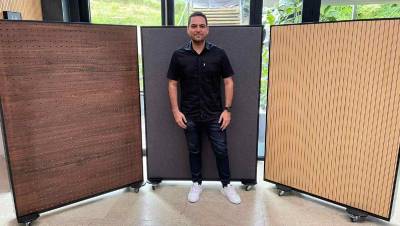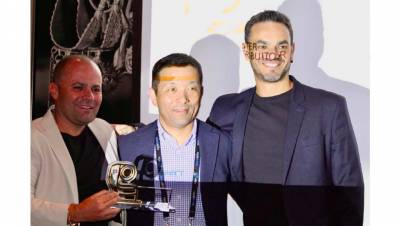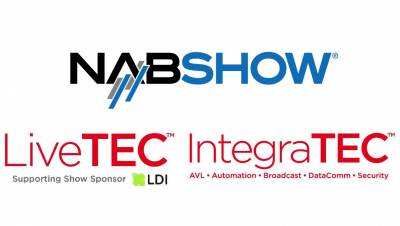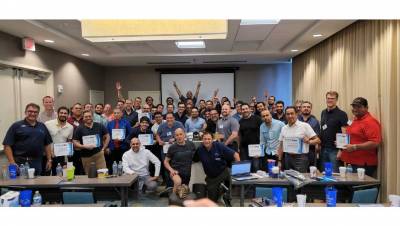 The technical specifications are very similar to electrical elements, do not panic if you do not understand one, here I will try to put it in simple words.
The technical specifications are very similar to electrical elements, do not panic if you do not understand one, here I will try to put it in simple words.
Juan Tamayo*
As sound professionals we have always been taught learning certain techniques and technologies, how to program a processor, how to calculate the gain structure, how to align the sound system, among many concepts. Generally in audio courses there is little talk of microphones, even when you see designs or technical documents you talk about certain brands and usually the same microphones.
It's as if nothing else exists and the capture universe is limited. I hope to be able to deliver in this series of articles the basic technical knowledge necessary to be able to understand the specifications of microphones, how to make technical decisions of selection of microphones and I hope to be able to deliver design recommendations for your project. Remember that the microphone is the transducer through which the mechanical signal enters and is transformed into an electrical signal. What comes in well, it is possible that it goes well, but if it goes wrong it is very difficult to sound good.
This article or series of articles is basic knowledge, not a design course. The recommendation is to look for bibliography or attend technical courses that will help you increase knowledge. I hope I can get interested in studying about microphones and that they can apply the right microphone in the right place.
How to read the data sheet of a microphone?
When I started in the audio world, I have to admit it, I didn't know much about microphones. I thought it changed little from one to the other. Or big surprise when I enter Audio-Technica and know a whole universe of audio signal capture solutions, but I could not explain the differences between them. Thus we started with the support of engineers a technical course on microphones. In this article I hope to deliver a summary of the course.
My goal is that you readers can know how to read the technical specifications of the microphones and know which one to use in particular design or installation situations. So let's get started.
We will try to explain the following concepts in this article:
- Element
- Polar Pattern
- Frequency response
- Open circuit sensitivity
- Impedance
- Maximum sound pressure level
- Noise
- Dynamic Range
- Fountain fantas
- Form
Microphones are transducers, the transducer is an element that transforms one type of energy into another, a microphone transforms acoustic energy into electrical energy, it goes from sound pressure to voltage, actually at very small voltages, we are talking about milli volts. That is why the technical specifications are very similar to electrical elements, do not panic if you do not understand one, here I will try to put it in simple words.
Element
The element is basically the type of technique used in the transducer. There are many types of microphones in the world. Carbon, dynamic, capacitor, tape, piezoelectrics, among many others. For the purpose of the article based on microphones for installation, I will explain only 2, the dynamic microphone and the condenser microphone.
Dynamic microphone: the transducer of this microphone has a fabric, called a membrane, in the middle of the membrane has a coil attached. On the axis of the coil there is a magnet that has no physical contact with the coil, when the air moves the membrane, it causes the coil to move and with the magnetic field of the magnet induces a current on it that generates a voltage, this is a dynamic effect, very similar to hydroelectric, that's why it's called a dynamic microphone.
The movement of air is caused by a sound pressure which is the audio that travels through the air. As you can see, the weight of the membrane plus the coil is high compared to air, so dynamic microphones are not so good for detail, because high frequencies containing less acoustic energy are not able to move the membrane. They are microphones that are very robust, not easily damaged, almost indestructible by very high sound pressure levels, but the voice in some solutions does not sound so good because of the lack of detail of the high frequencies.
Condenser microphone: the transducer of this microphone has a moving membrane, but on the back it has a fixed wall, and between these two surfaces there is a dielectric material. When the membrane moves it varies the distance of the dielectric material and generates a voltage, it is a capacitor effect and the name condenser microphone comes from the similarity of the capsule (its physical form) to the old currency-type capacitors called capacitors.
As the air has to move a very light membrane, these microphones are very good for audio with a very high definition but at high levels of sound pressure they were damaged very easily, so they were only used in recording studios where the environment is controlled. Currently, technologies have been developed in which condenser microphones are very easy to use and can be located in any type of application, including call systems or scenarios.
Condenser microphones require a phantom source for 2 basic functions:
Polarize the capacitor of the capsule, that is, the membrane and the fixed wall
Power the microphone preamplifier, since the voltage generated by this transducer is very small, and you have to raise it to be able to transport it through the audio cable.
Currently there is a group of condenser microphones called Electret, these microphones have the polarized back plate with a fixed load, that is why the phantom power required for these microphones is very low, 11 volts and in some applications even less. In conventional condenser microphones a 48 v phantom source is used.
In another installment I will talk a little more about the phantom source. If you have any questions you can write to me through the digital version of the magazine or email [email protected].
*Juan Tamayo is a senior application engineer for Audio-Technica Latin America, with more than 10 years of experience performing audiovisual projects as a designer, integrator, consultant, among other functions.


























Leave your comment